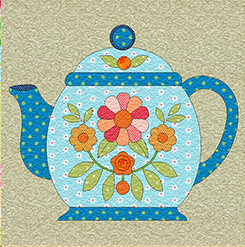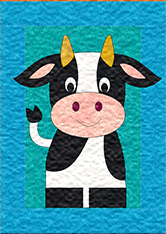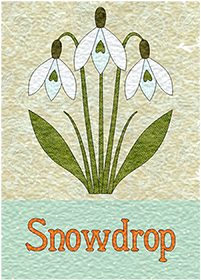 I started sewing (clothes) way back in 1976 on a Singer 404 (slant needle, manufactured in the U.S. 1958). It was given to me by one of the grandmothers in my husband’s family. And yes, it is older than me, but it’s joints sure act younger than mine! 🙂 And I still love it. All it has is a straight stitch, and it is a workhorse of a machine. I used to make all my clothes on this machine and am still proud of the fact that it has all its original parts. Since it is a mechanical machine, I have always been able to service it myself.
I started sewing (clothes) way back in 1976 on a Singer 404 (slant needle, manufactured in the U.S. 1958). It was given to me by one of the grandmothers in my husband’s family. And yes, it is older than me, but it’s joints sure act younger than mine! 🙂 And I still love it. All it has is a straight stitch, and it is a workhorse of a machine. I used to make all my clothes on this machine and am still proud of the fact that it has all its original parts. Since it is a mechanical machine, I have always been able to service it myself.
When I first took up quilting, I was able to find generic feet for this machine on a trip to the U.S. I was ecstatic. I could piece with a perfect ¼” seam, and I could now finally machine quilt. One of the things I love about this machine is the ample work area (11 inches). However, I have always had problems with this machine finding the right tension for free motion quilting. I have experimented with tension, types of thread and different needle sizes/types. Invariably, the thread tends to break a lot. So I tend to use this machine for heavy duty sewing projects and for stitch-in-the-ditch quilting… it has such a lovely straight stitch.
Enter my second sewing machine: a Singer 2630C. I purchased this machine locally (Singer has the biggest distribution line here in Ecuador), although this machine is manufactured in Brazil. At the time I purchased it I really, really wanted a zig-zag stitch and a few decorative stitches. I was happy to finally have the option for buttonholes (I used to make them by hand). This machine uses disks for its stitches. And I was able to find a foot for FMQ for this machine… the results, however, have been quite unfortunate. Whenever I try to FMQ on this machine, the stitches either skip or I end up with a tangled mess. Like the Singer 404, however, it is a nice, sturdy machine. So this is the machine I use for heavy duty projects requiring a zig-zag stitch. Like coiled baskets.
Then three years ago I was able to purchase a little Brother EX-660. I purchased it online, and my son brought it down for me (from the U.S.). In large part the decision was made because by then Brother had started to distribute sewing machines and sergers in Ecuador, so I knew I could have it serviced here. And wouldn’t you know it, this is the top of the line domestic sewing machine available in the country at this moment.
This is a super light machine (weighs only 11 lbs), and initially my intention was to use it to take back and forth whenever I taught a class. However, the few “bells and whistles” this machine has have led to it becoming my main sewing machine. Why? For one, I love the needle down/up setting – it really makes a difference for free motion quilting. It also has a ¼” setting for accurate piecing, and a great buttonhole stitch for machine appliqué. And with this little machine I can actually free motion quilt. The one and only down side, is the small work area: only 7″. Nearly impossible to fit a large quilt in that. And I am now aware of how important it is to have the bed level with the table. So I am trying to find a solution for that. I think I will probably end up having a carpenter make me a table just for this purpose.
I have read many posts by expert quilters who do beautiful machine quilting on domestic sewing machines. And yes, it can be done, but I have found the machine you use definitely makes a difference. At this point, I am seriously considering the possibility of having an industrial machine (Pfaff) adapted for me for FMQ. That is, if I can find a local distributor willing to do so. Otherwise, I might just have to plan a quick trip to the U.S. to purchase the machine I would like to have right now… You know, just use up those several thousand $$$ I just happen to have lying around…


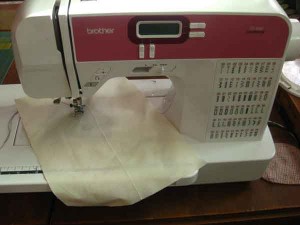
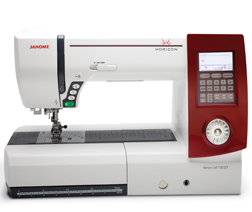
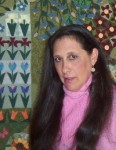 I am a self-learner. I taught myself to sew and to quilt. And I taught myself how to draw. I love to dye my own fabrics, am a fanatic of free-motion quilting, and dabble with mixed media. I am a quilt designer and teacher, and design and publish my own line of quilt patterns. With this blog I would like to share the bits and pieces of my life.
I am a self-learner. I taught myself to sew and to quilt. And I taught myself how to draw. I love to dye my own fabrics, am a fanatic of free-motion quilting, and dabble with mixed media. I am a quilt designer and teacher, and design and publish my own line of quilt patterns. With this blog I would like to share the bits and pieces of my life. 